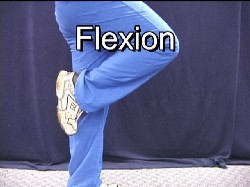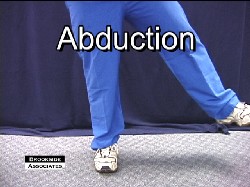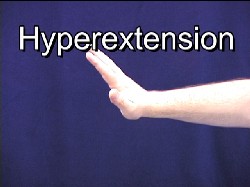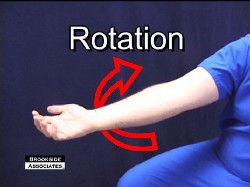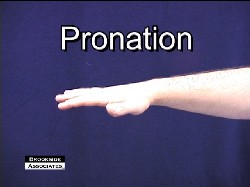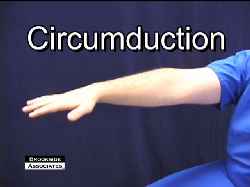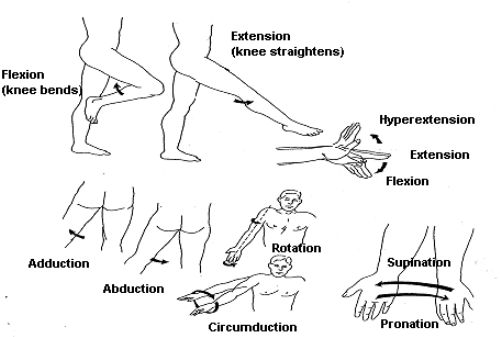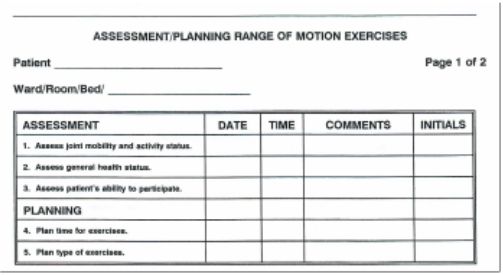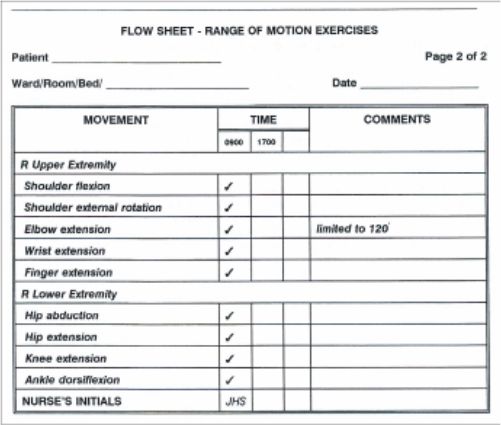 This is the Archived Desktop Edition. You should be transferred to the Newest Edition for Desktop and Mobile within 2 seconds. |
|||||||||||||||||||||||
Lesson 5: Active and Passive Range of Motion Exercises |
|||||||||||||||||||||||
|
NOTE : For types of body movement, see figure 5-1.Click on the pictures to
start the videos. 5-6. GUIDELINES FOR RANGE OF MOTION EXERCISES Plan when range of motion exercises should be done (see
figures 5-2
and 5-3). Plan
whether exercises will be passive, active-assistive, or active. Involve
the patient in planning the program of exercises and other activities
because he/she will be more apt to do the exercises voluntarily. Expect the patient's heart rate and respiratory rate to
increase during exercise.
Range-of-motion exercises should be done at least twice a
day. During the bath is one appropriate time. The warm bath water relaxes
the muscles and decreases spasticity of the joints. Also, during the bath,
areas are exposed so that the joints can be both moved and observed.
Another appropriate time might be before bedtime. The joints of helpless
or immobile patients should be exercised once every eight hours to prevent
contracture from occurring. Joints are exercised sequentially, starting with the neck
and moving down. Put each joint needing exercise through the range of
motion procedure a minimum of three times, and preferably five times.
Avoid overexerting the patient; do not continue the exercises to the point
that the patient develops fatigue. Some exercises may need to be delayed
until the patient's condition improves.
Start gradually and move slowly using smooth and rhythmic
movements appropriate for the patient's condition. Support the extremity when giving passive exercise to the
joints of the arm or leg. Stretch the muscles and keep the joint flexible. Move each joint until there is resistance, but never force
a joint to the point of pain. Keep friction at a minimum to avoid injuring the skin. Return the joint to its neutral position. Use passive exercises as required, however, encourage
active exercises when the patient is able to do so.
5-7. DOCUMENTATION
5-8. CONTRAINDICATIONS TO RANGE OF MOTION EXERCISES
5-9. CLOSING Encourage the immobile patient to participate as fully as possible so that he feels involved in the process. Always explain to the patient what you are about to do and enlist his cooperation. To avoid strain, remember to maintain your own proper body mechanics as you carry out the exercises for the patient. The overall nursing goal is to promote the maximum degree of mobility for the patient who cannot engage in the normal activities of daily living and prevent or reduce the effects of immobility. Performing range of motion exercises can often save the patient a lengthy rehabilitation.
The Brookside Associates Medical Education Division is dedicated to the development and dissemination of medical information that may be useful to medical professionals and those in training to become medical professionals. This website is privately-held and not connected to any governmental agency. The views expressed here are those of the authors, and unless otherwise noted, do not necessarily reflect the views of the Brookside Associates, Ltd., any governmental or private organizations. All writings, discussions, and publications on this website are unclassified. © 2007 Medical Education Division, Brookside Associates, Ltd. All rights reserved
|
|
||||||||||||||||||||||
